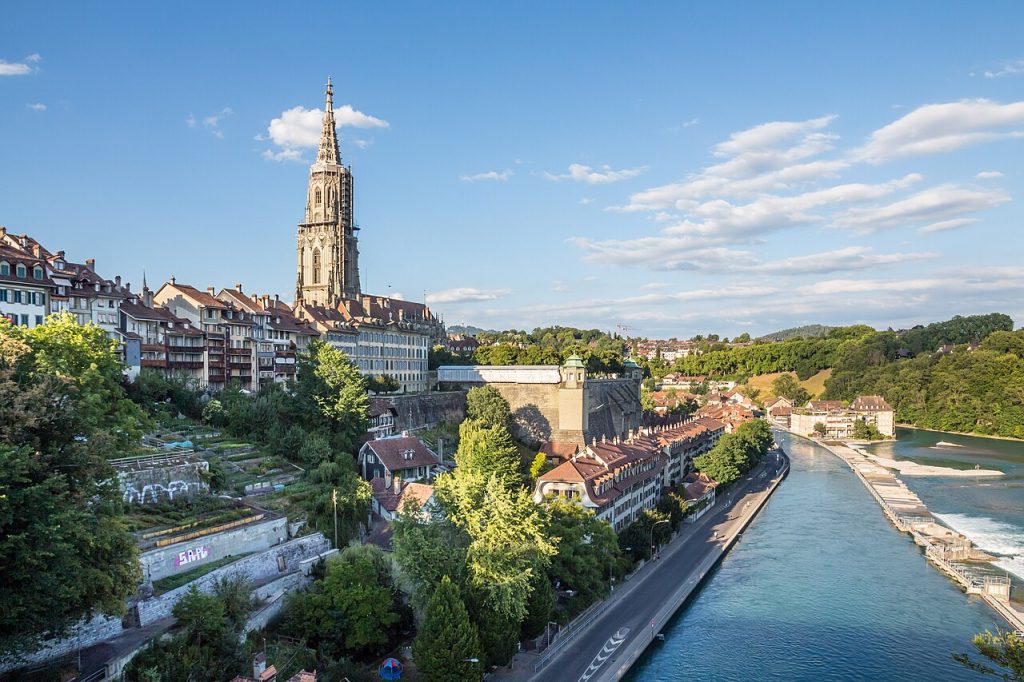
The Jewish presence in Bern probably dates from the 6th century. Jews are mentioned in the legal texts. During the Middle Ages, as in many other cities in the region, the situation of the Jews varied between reception, persecution (which began in Bern in 1294) and expulsion, depending on the power in place. In the wave of great expulsions that took place between the end of the 14th and the end of the 15th century, the Bernese Jews were expelled in 1427.
In the fourteenth century, the Jewish ghetto extended into the federal government’s current site: the Inselgasse, seat of the Department of the Interior, was called the Judengasse; the Federal Palace took over the spot of the Jewish cemetery. The current Community Center and its Moorish synagogue are not far away, on the Kapellenstrasse.

An unusual feature of the Kornhausplatz is Ogre Fountain, which dates from 1544. For some, the statue of the ogre in the act of devouring children represents merely a carnival image. For others, it is a Middle Age representation of the Jew accused of killing Christian children. The ogre is waring a pointed yellow hat, identical to the one imposed on the Jews to make them easily distinguishable.
In 2017, the Museum of Fine Arts in Bern presented the exhibition “Degenerate, Confiscated and Sold Art”. Among the 200 works were paintings by Franz Marc, Otto Dix and Otto Mueller. They are part of a legacy of the collector Cornelius Gurlitt, who also gave the museum paintings by Cézanne, Delacroix and Munch that he had hidden in his Munich flat for decades. His father was commissioned by the Nazis to sell art stolen from Jews by the regime, art labelled “degenerate”. The recovery of the works by the families was at the heart of a long legal process. The works shown in the exhibition do not concern the stolen paintings.
Interview with Jacob Guzman, historian and active member of the Jewish community of Bern
Jguideeurope : What motivated your commitment to the development of Bern’s Jewish cultural heritage?
Jacob Guzman : This heritage is in danger of disappearing if we don’t take the trouble to make it known to the population. We need other media than history books.
How did the big exhibition about Albert Einstein work out?
The director of the history museum contacted the community in Bern to get some information about Jewish life in Bern at the time of Albert Einstein. We have given some ritual objects, a Torah, and a towel that belonged to Einstein on long-term loan.
Can you tell us about an encounter with a visitor or speaker at a cultural event that particularly impressed you?
One example among many: the meeting with the architect Ron Epstein who wrote a book on the architecture of synagogues in Switzerland. We had the privilege in Bern to have, for several years, a series of lectures on Jewish themes. These paid lectures were, although organized by a member of our community, open to everyone. This gave us the opportunity to have contact with many speakers and allowed the non-Jewish public to know some aspects of Jewish culture.